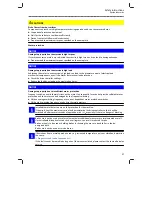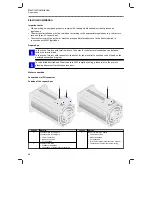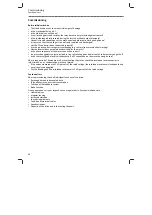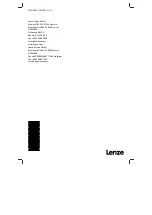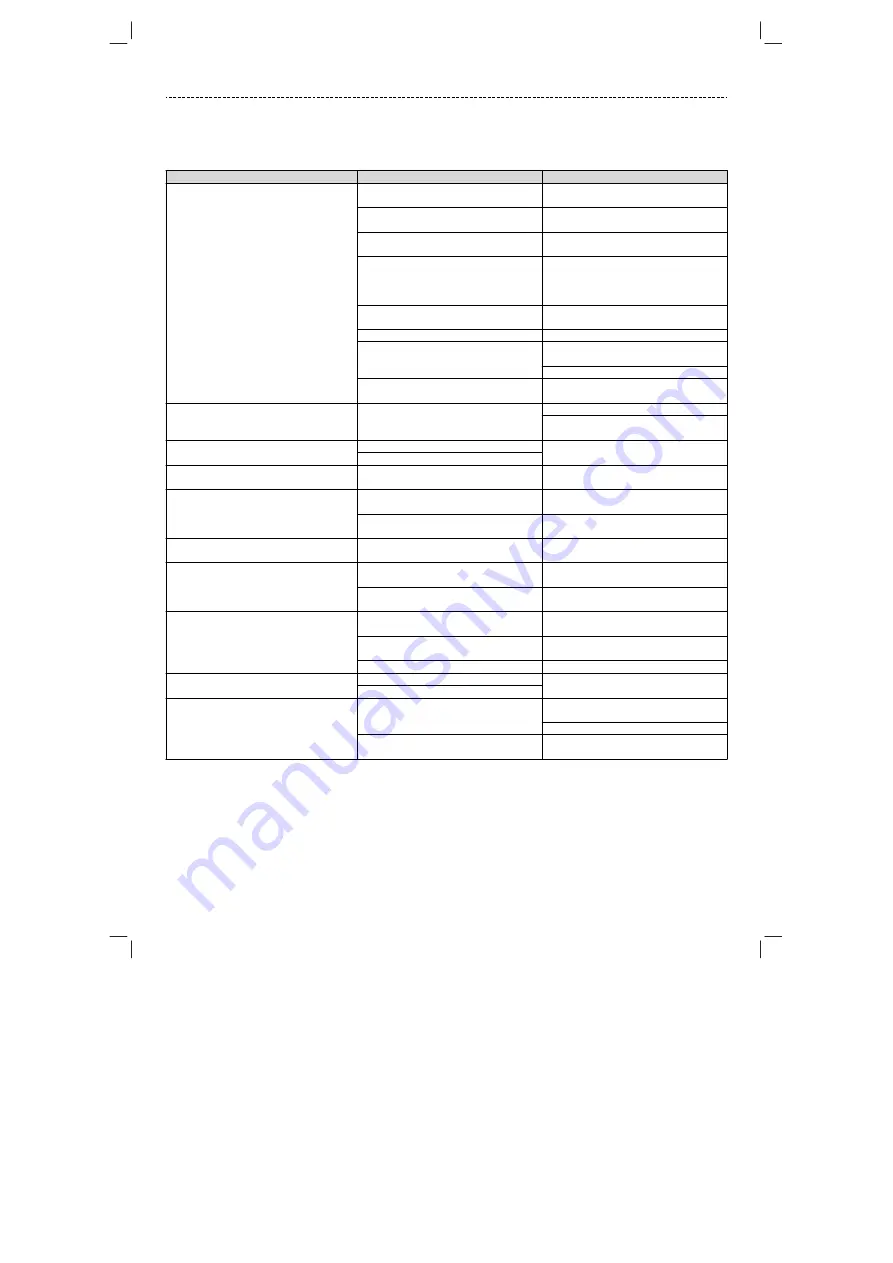
Diagnostics and fault elimination
If faults occur during the operation of the drive, the table below helps you to identify the causes. If it is not
possible to remedy the fault using the measures listed, please contact the Lenze service department.
Error
Possible causes
Remedy
Motor too hot
Can only be evaluated by measuring the
surface temperature:
•
Non‐ventilated motors >140 °C
•
Externally ventilated or self‐ventilated
motors > 110 °C
Insufficient cooling air, blocked air ducts. Ensure unimpeded circulation of cooling
air
Preheated cooling air
Ensure a sufficient supply of fresh cooling
air
Overload, with normal mains voltage the
current is too high and the speed too low
Use larger drive (determined by power
measurement)
Rated operating mode (S1 to S8 IEC/EN
60034-1) exceeded
Adjust rated operating mode to the
specified operating conditions.
Determination of correct drive by expert
or Lenze customer service
Loose contact in supply cable (temporary
single-phase operation!)
Tighten loose contact
Fuse has blown (single-phasing!)
Replace fuse
Overload of the drive
Check load and, if necessary, reduce by
means of longer ramp-up times
Check winding temperature
Heat dissipation impeded by deposits
Clean surface and cooling fins of the
drives
Motor suddenly stops and does not restart Overload monitoring of the inverter is
activated
Check inverter settings
Reduce load caused by longer acceleration
times
Incorrect direction of rotation of the motor,
correct display on the inverter
Motor cable with reverse polarity
Check and correct polarity
Polarity of encoder cable reversed
Motor rotates normally but does not reach
the expected torque
Motor cable interchanged cyclically
Not all motor phases connected
Connect the phases at the motor cable
connection correctly
Motor turns in one direction at maximum
speed in an uncontrolled manner
Motor cable interchanged cyclically
Check motor connection and, if necessary,
correct
Polarity of encoder cable reversed
Check encoder connection and, if
necessary, correct
Motor slowly rotates in one direction and is
not influenced by the inverter
Polarity of motor cable and encoder cable
reversed
Check and correct polarity
Irregular running
Insufficient shielding of motor or resolver
cable
Checking shielding and earth connection
Inverter gain too large
Adjust the gains of the controllers (see
operating instructions for the inverter)
Vibrations
Insufficiently balanced coupling elements
or machine
Rebalance
Inadequate alignment of drive train
Realign machine unit, check foundation, if
necessary.
Loose fixing screws
Check and tighten screw connections
Running noises
Foreign particles inside the motor
Repair by the manufacturer, if necessary
Bearing damage
Surface temperature > 140 °C
Overload of the drive
Check load and, if necessary, reduce by
means of longer ramp-up times.
Check winding temperature
Heat dissipation impeded by deposits
Clean surface and cooling fins of the
drives.
Diagnostics and fault elimination
51

